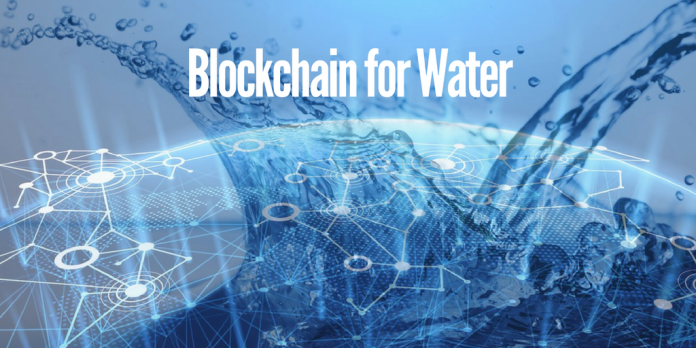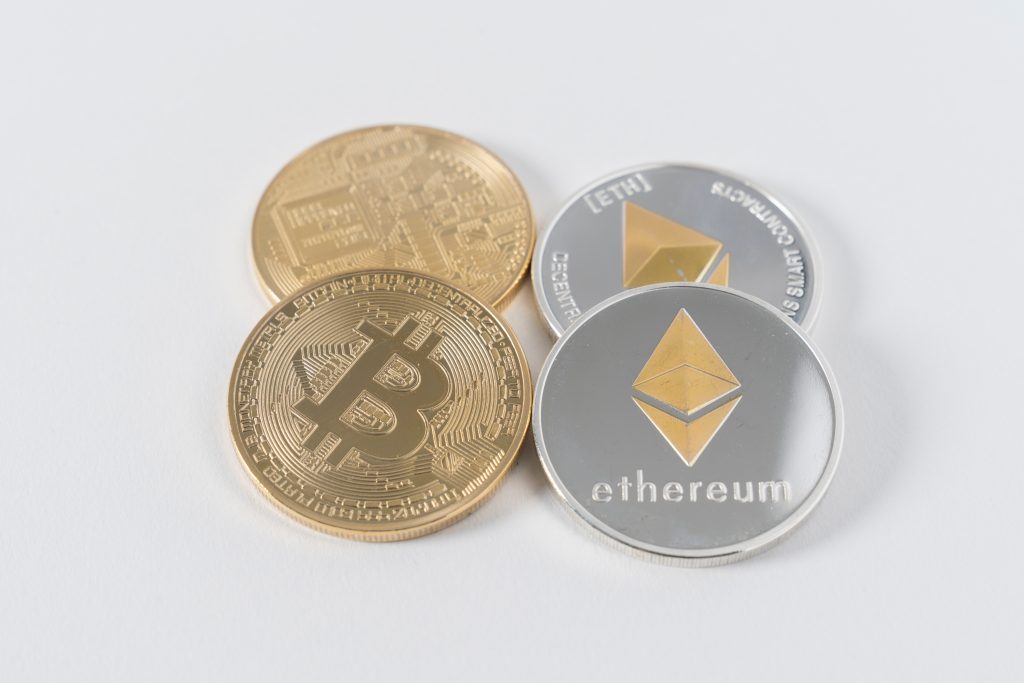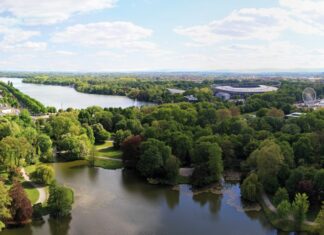By Emma Weisbord
In Part 1 of this series, the fundamentals of blockchain were explained to provide a basis of understanding of this new technology and how it could be applied within the water sector. In the next parts of the series, I intend to describe in greater detail how certain aspects of blockchain would be useful for the water sector and why we should seriously consider integrating this technology as a core component of operations across utilities, cities and basins.
Relatively few of us understand the underlying specifics of the internet, can read binary or write code, even though we use computers and have digitised our lives. In the same way, the intention here is not to describe the intricacies of the technology, but instead to build capacity to understand the potential benefits of integrating blockchain technology into the water sector to address some of the key challenges faced in the 21st century in both high and low income countries. It is important to note that the uptake of this technology is still in an exploratory phase and we are seeing in real time what possibilities are arising and how blockchain might yet be used. As for all technologies, it should be viewed as a tool to achieve your goals, not as the goal in itself. The business need is where to start.
In the same way that Youtube, blogs and social media have allowed for user generated content in a distributed, decentralised way, blockchain allows people to exchange assets without needing an intermediary. The technological revolution has democratised content by giving individuals access to computation capacity and blockchain is simply the next phase of this. This technology will lead to an extensive redefining of business processes within and between companies.
Businesses that opt to integrate blockchain and learn how this technology will alter and improve their operations will be heralded as the early adopters and reap the rewards in the industry. With the water sector moving towards smart city integration, IoT, AI and the data economy, blockchain can provide a future-proof, integrated foundation for water utilities.
Recap
As a reminder of what we are talking about – blockchain is a distributed database which allows different parties of common interest to agree on an immutable and transparent record of an exchange of a particular kind of asset, whether this is a cryptocurrency like Bitcoin or whether it represents the movement of goods through a supply chain.
There are three levels of blockchain. The first level is the storing of digital records in a controlled, secure, auditable and immutable way, not simply of transactions but also of digital representations of physical assets – for example a utility’s water quality data. The second level is the exchange of digital assets where people can transfer ownership in real time without the need for banks, stock exchanges or payment processors – for example paying for a water bill. The third level is the execution of smart contracts which are contracts written in code that include rules, conditions, expiry dates and any other necessary information that are embedded in a blockchain and automatically execute when the conditions are met. Smart contracts allow businesses to reduce the time spent on paperwork, enforcing contracts and interacting with third parties.
The terms of the smart contract are recorded into the code and subsequently implemented automatically through the shared network which monitors compliance and verifies the outcomes without the need of a third party – for example, payments to contractors wherein a smart contract would be possible for contractors only if it determines the business has enough funds to pay for the requested services. Another example of the use of blockchain-based smart contracts is the trade of water rights in water markets – this will be discussed in more detail in the blog on blockchain for basins.
The main uses to date of blockchain technology have been in the cryptocurrency world – you might have heard of Bitcoin or second generation coins like Ethereum or Litecoin.
More recently, there has been a large uptake of blockchain technology outside of cryptocurrencies. Based on how blockchain technology is designed, its use provides an opportunity to prove integrity of data and further develop trust in the data economy. Of note is the potential to help utilities, cities and local authorities reduce the cost of operations through the use of blockchain – with the increasing pressure on utilities to do more with less, this technology can help reduce costs by removing intermediaries and the expensive transaction fees that these entail. Equally, through the use of this tool that promotes transparency, we are likely to see an increase in citizen engagement.
As a way to improve efficiency, increase security and cut costs, it is a technology worth looking into more closely. Efficiency is the most basic and relevant reason that many leading companies are embracing blockchain technology, especially in sectors where transactions and records are core to their business. Sectors with heavy supply chains are investing in blockchain to create more transparency throughout their systems – Nestle, Walmart, Costco for example are working with IBM to develop global food chain supply safety. Why not the water sector?
B in B: Blockchain in Business
There is a growing need for the water sector to address global water scarcity and water quality challenges through new approaches. Water utilities face acute challenges at a local scale to meet the needs of growing urban populations. Costly centralised systems might not be the way forward and if (or when) the predicted trend towards decentralisation and digitalisation becomes a reality, then blockchain technology will be fundamental to this new digital water world.
Some fascinating projects are coming about, facilitated through blockchain, that aim to build decentralised, resource-based economy networks. Blockchain technology can help mediate payments between producer and consumer, as well as record exact exchanges of water resource assets and payments through new digital financial systems like cryptocurrencies. This technology has the potential to decentralise and democratise the use and management of resources and put communities at the centre of sustainable development. If this seems like a far way off, think back to the early 2000s – how many people had a mobile phone?
Cutting costs and speedy transactions
Even for our current centralised systems, blockchain can help to create more efficiencies and cut fees by providing a system through which transactions are quickly settled at a low cost. Santander found that implementing blockchain into bank transactions dramatically cuts costs while allowing for relatively immediate payments, reducing the delays and fees incurred by traditional banking systems. Utilities that automate their processes through blockchain and remove the intermediaries that distribute payments and process transactions would benefit from improving speed and efficiency of payments for customers as well as reduce their own operating costs and risks of errors. By providing a secure, immutable system, blockchain could help to streamline transactions for water utilities.
Know your customer & engage them
By providing a common record of information relating to your customers, blockchain allows companies to immediately access information and updates relating to client records – be it changes in address, payments, water usage – this could all be stored internally and securely to improve customer service. Identification blockchains would enable utilities to securely and efficiently manage digital identities and private information while increasing transparency around their use of data and compliance with regulations.
As well, with regards to public perception, water companies could benefit from incorporating blockchain technology to ensure more transparency in their operations. Through a public ledger of information, water companies would be accountable to their customers by storing their expenditures, water quality data, and pricing in a publicly accessible blockchain system.
Audits
On the accounting side, companies that are required to disclose their financial information can keep this data on an immutable public ledger that is timestamped and thus decrease the need for manual auditing to determine authenticity. This level of transparency can be applied across the water sector to reduce fraud and corruption. In water utilities, immutable and secure blockchain systems can help overburdened organisations save countless hours of manual work.
Blockchain for digital water technologies
For water utilities that are incorporating an ever expanding menu of digital water technologies, secure blockchain systems diminish risks of hacking, data destruction and improve transparency. The shift of water utilities towards digital water technologies brings about exciting and paradigm shifting opportunities. The uptake of sensors and big data usage by utilities require data reliability, accessibility and analytics which can partly be managed via blockchain systems. Digitising asset management can be made more reliable with this distributed ledger technology. Finally, as a way to ensure customer engagement and satisfaction, transparency and cost-effectiveness are crucial to building strong relationships with clients. Open data systems can help set up a basis for trustworthy utilities and blockchain can increase the speed at which information is available to stakeholders.
The most successful water utilities will be those where the underlying blockchain systems are invisible to users in seamless, user friendly ways and integrated across digital water technologies. Blockchain is the final drop in the wave of digital water disruption. The technology enables businesses to remove intermediaries that have long been embedded in the cost and resourcing of operations. This will fundamentally alter the way we interact with transactions and the way we manage and operate access to assets like water.
The hype
It is easy to get caught up in the latest techno craze, and blockchain requires a mindshift of mass scale and a rethinking of our long term visions. There are obviously major challenges associated with this new tech, namely acceptability, scalability and proof of concept in multiple industries. The water sector as a whole must work together to envision how to make the most of the benefits that blockchain can provide and how a shift to decentralised systems could help achieve our goal of a water wise world.
Emma has worked on sustainable development projects in North America, East Africa and Latin America, including with the Canadian International Development Agency in rural Cuba. Working on water issues in Cuba taught her that interdisciplinary thinking, partnership building, communication and engagement are foundations for good water governance.









